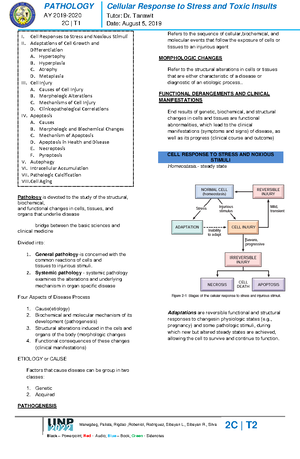- Information
- AI Chat
Was this document helpful?
S3 and s4 - heart sounds
Course: Medicine (MD)
75 Documents
Students shared 75 documents in this course
University: University of Northern Philippines
Was this document helpful?

DOMINGO, JOHN VICKSEN M. DCFM: Group-6, Subgroup 2
The main normal heart sounds are the S1 and the S2 heart sound. The S3 can be normal, at times, but may be pathologic. A
S4 heart sound is almost always pathologic.
Heart
Sounds S3 S4
a.k.a. “Ventricular Gallop” “Atrial Gallop”
Definition ●After the mitral valve opens, there is a period of rapid
ventricular filling as blood flows early in diastole from
left atrium to left ventricle. In children and young
adults, a third heart sound, S3, may arise from rapid
deceleration of the column of blood against the
ventricular wall.
●In older adults, an S3, sometimes termed “an S3
gallop,” usually indicates a pathologic change in
ventricular compliance.
●It is often a sign of systolic failure
●A fourth heart sound, S4, marks atrial contraction and
is often not found in normal adults. It immediately
precedes S1 of the next beat and can also reflect a
pathologic change in ventricular compliance
●It is an important sign of diastolic HF or active
ischemia and is rarely a normal finding
Occurrence Occurs just after S2 (early diastole) when the mitral
valve opens, allowing passive filling of the left ventricle.
immediately precedes S1 (late diastole) when the atria
contract to force blood into the left ventricle
Etiology The S3 sound is actually produced by the large amount
of blood striking a very compliant left ventricle.
The fourth heart sound (S4), when audible, is caused
by vibration of the ventricular wall during atrial
contraction.
This sound is usually associated with a stiffened
ventricle (low ventricular compliance)
Sound low pitched sound that is best heard at the apex with the
patient in the left lateral decubitus position
Possible
Conditions
↑ Ventricular Compliance (overly
compliant LV)
Physiologic
�children
�pregnant
�well trained athletes
Pathologic
�Congestive Heart Failure
↓Ventricular Compliance (non-compliant
LV)
e.g.
�Left Ventricular Hypertrophy
�Myocardial ischemia
�Older adults






